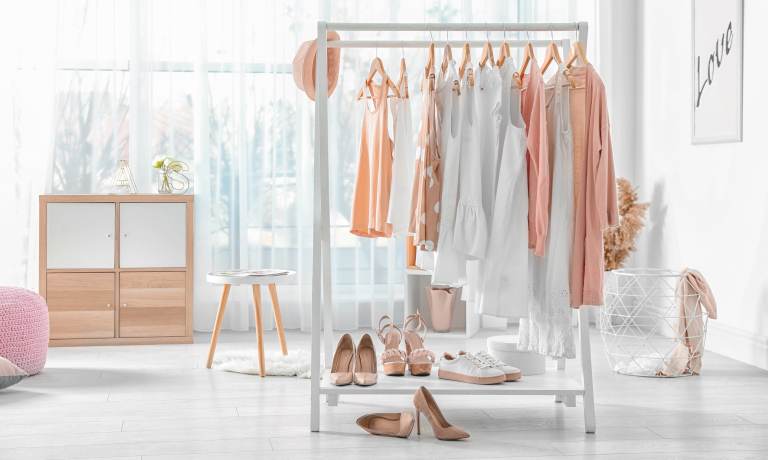Delta Galil On Why Buy Now, Pay Later Is Changing The Fashion Industry

Buy Now, Pay Later (BNPL) solutions are beginning to ingratiate themselves further into the buying experience for customers worldwide. The no-interest, no-fee nature of these solutions intrigues consumers — especially the millennial and Generation Z demographics — searching for alternative payment methods that can grant them further flexibility and convenience while shopping.
![]() Consumers are using installment payments to purchase everything from clothing to cosmetics, and the race to see which BNPL provider will dominate in which market is on. Both payment providers and retailers must come up with new ways to engineer the loyalty of shoppers, with multiple options and ways to interact with brands.
Consumers are using installment payments to purchase everything from clothing to cosmetics, and the race to see which BNPL provider will dominate in which market is on. Both payment providers and retailers must come up with new ways to engineer the loyalty of shoppers, with multiple options and ways to interact with brands.
In the latest “Buy Now, Pay Later Tracker®,” PYMNTS examines how BNPL solutions are growing and expanding in retail worldwide, for both in-store and online shopping. The Tracker also analyzes how consumers are using BNPL for different purchase areas, including fashion and online ticketing, as well how installment payment solutions could potentially help retailers fight cart abandonment and other challenges.
Around The Buy Now, Pay Later World
BNPL is continuing to grow worldwide, with particular growth over the past few months in the U.S. This may be due to the fact that many American millennial and Gen Z shoppers are still wary of credit cards, and hunting for alternative payment methods. One report noted that BNPL is becoming more popular among shoppers in these generations, especially via mobile. For example, 80% of customers for BNPL provider Afterpay made purchases over mobile.
More shoppers are making purchases over multiple channels, with the importance of mobile shopping steadily rising, especially among younger users. Installment payment app downloads have risen as well, with one report citing that these downloads increased by 162% last year. Approximately 6 million cust![]() omers now have at least one BNPL app on their smartphones, which means mobile is becoming more of a competitive area for payment providers that need to expand their customer bases.
omers now have at least one BNPL app on their smartphones, which means mobile is becoming more of a competitive area for payment providers that need to expand their customer bases.
Consumers also seem to turn to BNPL solutions for certain purchases, including sneakers and running shoes — an area of fashion that has become more luxurious and expensive in recent years. For example, sneakers were the first- and second-highest seller items for Afterpay in the U.S. during last year’s holiday season. Air Jordans were the top sellers, with sneakers overtaking the sale of cosmetics and clothing. However, these two items still represented the next most-popular purchase areas for Afterpay during the holidays.
To learn more, visit the Tracker’s News & Trends section.
BNPL Can Boost Fashion Purchases
![]() The multibillion-dollar fashion industry moves quickly, and those retailers that do not or cannot adapt are quickly left behind. The advent of global online commerce has only made competition in this area all the more difficult, which is why brands must employ creative tactics to ensnare customers with their choice of brands.
The multibillion-dollar fashion industry moves quickly, and those retailers that do not or cannot adapt are quickly left behind. The advent of global online commerce has only made competition in this area all the more difficult, which is why brands must employ creative tactics to ensnare customers with their choice of brands.
The use of alternative payment tools, such as BNPL, could be one way for fashion retailers to entice customers, said Geoff Staff, vice president of retail and eCommerce for Delta Galil Industries, in a recent interview with PYMNTS. These solutions could also inspire customers to make aspirational or pricier purchases that they may have otherwise passed by, he added.
To learn more about how BNPL could be used as a customer acquisition and loyalty tool in the fashion industry, visit the Tracker’s feature story.
How BNPL Solutions Could Slow Cart Abandonment
Cart abandonment remains a significant worry for retailers everywhere, as consumers halt transactions online and via mobile apps for indiscernible reasons. For example, customers left $34 billion in abandoned goods during 2018, and retailers are searching for tools that could give shoppers the final push they need to move those products out of their carts and into their homes.
BNPL could potentially be one of the ways to positively impact this, as the main concern for shoppers who do not complete these transactions is the pricing. This is especially true for younger customers, who have begun to make up a larger percentage of eCommerce shoppers.
To learn more about the potential impact of BNPL on online and mobile cart abandonment, visit the Tracker’s Deep Dive.
About The Tracker
The “Buy Now, Pay Later Tracker®,” a PYMNTS and Afterpay collaboration, brings the latest news and research from the buy now, pay later and retail space. It features expert analysis regarding the changing payment trends, as well as insights from top insiders within the retail and fashion industries.